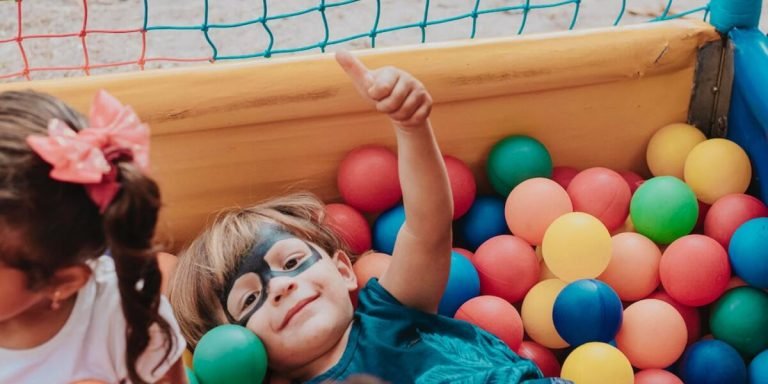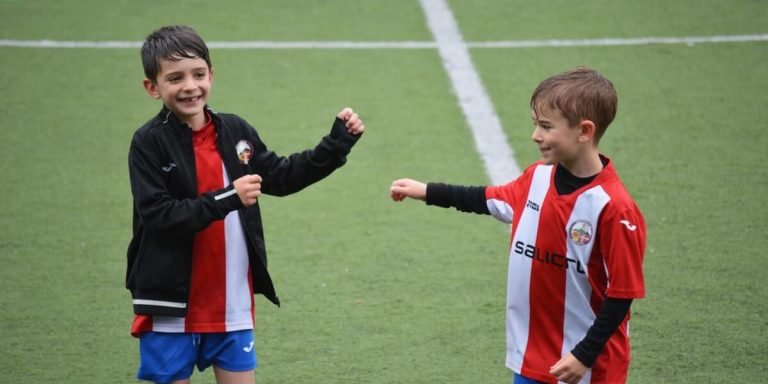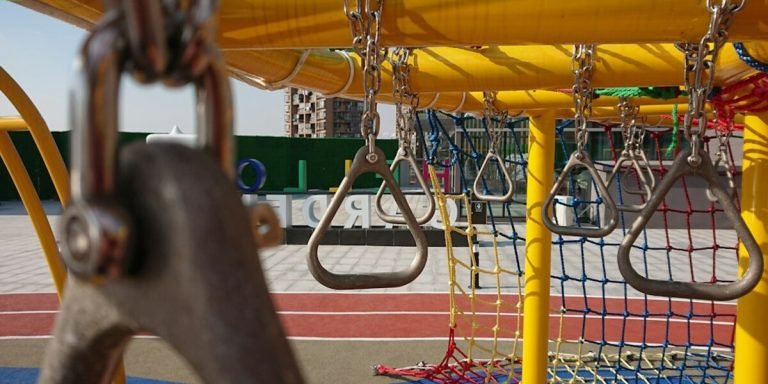Science Experiments for 5th Graders: A Comprehensive Guide to Engaging Young Minds
Embarking on a journey of learning through discovery, science experiments for 5th graders are more than just school curriculum – they represent an adventure into the fascinating world of knowledge. With the current emphasis on activity-based learning, these endeavors serve as valuable tools to pique curiosity and develop scientific thinking among young learners.
This comprehensive guide intends to walk parents and educators through a variety of engaging activities that can effectively immerse 5th graders in practical science experimentation. It will showcase how hands-on involvement not only reinforces theoretical concepts but also instills problem-solving skills which form the foundation of lifelong learning.
Did you know?
The Potato Battery experiment, a favorite among fifth graders, generates enough electricity to power a small digital clock. The copper and zinc inserted into the potato create this electricity through a chemical reaction.
Exploring the Benefits of Activity-Based Learning in Science Education
Encouraging 5th graders to immerse themselves in science education can be an exciting adventure, especially when activity-based learning is used as the primary approach. This method offers a hands-on experience that directly involves students in their own process of knowledge acquisition. It also promotes better understanding and retention of scientific concepts by enabling them to become active participants instead of passive recipients.
In this era of burgeoning technology, integrating digital tools into these activities further enhances the teaching-learning dynamic making it more engaging and interactive for our tech-savvy generation. Think about using applications or websites where children can conduct virtual science experiments at home or creating a collaborative online platform where they could share their observations from real-life experimentation – all while honing their digital literacy skills!
Another advantage is fostering critical thinking and problem-solving abilities among 5th graders through Activity-Based Learning (ABL). When executing science experiments, they encounter challenges that require innovative solutions thus sharpening key cognitive skills which are necessary beyond school life —as we navigate workspaces increasingly dominated by AI functionalities—underlining how ABL seamlessly ties together early childhood education with future-ready competencies.
Enhancing Critical Thinking through Hands-On Experiments
The concept of activity-based learning is revolutionizing education, particularly in the realm of science. When we focus specifically on 5th graders, it becomes essential to introduce interactive elements into their curriculum that can encourage an active interest and nurture critical thinking abilities. One such effective method is conducting hands-on experiments.
Hands-On Science Experiments prove instrumental in enabling students to apply theoretical knowledge practically. Rather than just reading from a textbook about how things work, kids get involved directly with real-world applications—leading them through processes which bring those theories to life.
For instance, let us consider common science experiments for 5th graders like creating homemade volcanoes or building simple circuits. Such projects not only spark excitement but also help reinforce scientific concepts related to chemical reactions or electricity respectively.
Furthermore, this handful approach endorses analytical reasoning and problem-solving capabilities among children by letting them observe cause-effect relationships closely instead of merely memorizing hard facts.
They start questioning why certain outcomes happen during these trials – thereby instigating a cycle of thought-processing where they learn more intricately about our physical world’s functioning aspects.
Meanwhile, integrating technology accentuates these benefits exponentially as it upgrades traditional lab settings into tech-enriched platforms.
Fostering a Deeper Understanding of Scientific Concepts
Exploring the fascinating world of science can be an unforgettable journey, particularly when we create opportunities for hands-on experiences. One such method that is gaining widespread popularity in classrooms across the globe is activity-based learning (ABL). This dynamic, student-centered approach to education has numerous intrinsic benefits and shows remarkable effectiveness in teaching scientific concepts.
Encouraging children with practical activities like science experiments for 5th graders largely aids them to develop a deeper understanding of complex concepts. These aren’t your typical textbook diagrams but live scenarios where they witness chemical reactions or explore laws of physics firsthand. Kids get to observe processes unfold right before their eyes; this stimulates curiosity, encourages creativity & critical thinking – all essential elements required by budding scientists.
Technology integration further fuels these fun-filled yet educational interactions making it more engaging. With virtual labs coming into play through augmented reality systems and interactive apps available on tablets or personal devices, students no longer are bound within four walls of classroom settings.
Modern tech-tools also bring accessibility features into picture ensuring ‘inclusive’ learning environment which implies no child gets left behind due their diverse physical capabilities – indeed revolutionizing way we perceive conventional childhood education landscape!
Moreover, ABL instills a sense of responsibility as each experiment requires careful planning and implementation adhering safety protocols giving them initial exposure actual laboratory working conditions thereby laying strong foundations future endeavours if choose pursue career path related fields ultimately boosting confidence self-dependency from early stages life itself.
Innovative Science Experiment Ideas for 5th Graders
In the realm of education, particularly childhood learning, it’s evident that technology integration and hands-on activities play a pivotal role. One extremely beneficial approach to instilling scientific curiosity in 5th graders is through innovative science experiments. These not only foster an understanding of complex theories but also make learning more engaging and fun-filled.
When incorporating technology into these experimental sessions for 5th graders, educators can utilize digital platforms or tools such as interactive online laboratories or educational software programs designed to simulate real-life scenarios. Such resources help students visualize abstract concepts practically while allowing them to experiment safely within virtual environments – all contributing massively towards improving their analytical thinking abilities.
In the digitally inclined year of 2023, integrating activity-based learning with technology has become crucial for the development of young learners. Teachers are molding tomorrow’s innovators by using well-structured science experiments that relate to core curriculum topics in physics, chemistry, or biology. Hands-on experiences combine theoretical knowledge with practical skills and significantly enhance conceptual understanding among children who are highly receptive to new learnings at this impressionable age.
Conducting Safe and Educational Chemical Reactions at School
Guiding children through the world of science can be a rewarding experience, especially when it comes to performing safe and educational chemical reactions at school. Introducing 5th graders to hands-on activities that intertwine technology with core scientific principles brings learning to life in fascinating ways. Here are some ideas for conducting groundbreaking “science experiments for 5th graders” using activity-based learning methodologies.
Let’s start by exploring the concept of states of matter using an interesting experiment: ‘Ice Melting.’ This simple yet effective demonstration provides first-hand insight into how substances change from one state (solid) to another (liquid). You’ll need an ice cube, plate, timer – all widely available items made more interactive with various mobile apps displaying time elapsed or temperature changes over time.
Ever wondered about invisible ink? It involves basic chemistry and could be transformed into a fun programmatic exercise with coding languages like Scratch Jr., allowing students not only understand reaction between acid-base but also learn coding basics as they make text appear/disappear on their screens.
Volcanic eruptions provide mesmerizing visuals which are perfect for demonstrating both physical and chemical changes along with explaining natural events involving magma/lava flow. Using baking soda-vinegar eruption model aligned alongside augmented reality applications such as Google Expeditions creates immersive experiences where learners can visualize real-life volcanic structures while creating faux-eruptions right inside classrooms!
Building Simple Machines to Teach Physics Fundamentals
Integrating technology into education is a thriving trend, and one phenomenal way this can be done is via building simple machines for science experiments. These projects not only make learning fun but also help 5th graders grasp the fundamentals of physics in an engaging manner.
A splendid idea to kick-start activity-based learning could be assembling a lever. A basic seesaw model simplifies understanding mechanical advantage, force and load concepts. Equip students with rulers or wooden dowels as beams; plastic spoons or small blocks as fulcrums; pennies or toy cars for loads – choices are vast!
Let them experiment by moving the fulcrum’s position closer to either end noticing how it affects lifting ease.
Next on our list of innovative science experiments for 5th graders would be creating pulleys using string threaded over empty thread spools or soda cans serving as wheels hitched onto pencils acting like axles. Demonstrations where kids raise heavy objects effortlessly will certainly ignite their curiosity towards mechanical advantage that these systems offer.
Following this, educators may introduce inclined planes showcasing how less effort is needed when shifting from direct vertical lifts while loading goods higher up — all you need are planks elevated at different angles with various weights being pushed upwards!
One more intriguing project involves constructing wheel-and-axle mechanisms using cardboard discs attached centrally onto pencil shafts rolling along flat surfaces under applied forces – excellent examples include turning door knobs poor opening bottle caps!
Measuring the Impact of Interactive Learning on Student Engagement
The landscape of childhood education has drastically changed over the years. One pivotal change that has marked its noteworthy presence is the integration of technology in teaching methodologies, especially when assessing topics as fascinating and versatile as science experiments for 5th graders.
In our technologically driven world, interactive learning acts like a bridge connecting theoretical lectures to practical understandings. The profound impact on student engagement these tools are providing cannot be understated. They make complex concepts or theories appear much more straightforward with real-world applications which increases curiosity and participation among young learners.
For instance, consider a 5th grader trying their hand at an online physics experiment about ‘Gravity.’ With just a computer or tablet within reach support active involvement from students while ensuring they grasp fundamental principles associated with gravity laws effortlessly.
While exploring activity-based learning through technological intervention, it important to highlight how such methodology assists not only cognitive development but also enhance social skills amongst peers participating together in group-oriented tasks.
Despite being physically distant due to various reasons including the lingering effects of pandemic-related restrictions in some parts of the globe even till now –2023– teachers have been discovering fresh ways to inspire innovation and critical thinking by harnessing digital resources towards meaningful educational experiences across multiple subject areas whilst maintaining high levels on student engagements consistently during class hours thanks largely this progressive approach incorporated into modern-day pedagogy practices today!
Assessing Cognitive Gains from Participatory Science Activities
In an ever-evolving digitized world, the integration of technology in education has become integral. More than ever before, educators are using innovative learning strategies to engage students and enhance their understanding. When it comes to science teaching, particularly for 5th graders, interactive activities have proven immensely beneficial.
Activity Based Learning (ABL), specifically participatory science experiments can enrich cognitive prowess exponentially.
A key aspect advancing this educational revolution is the availability of diverse resources promoting hands-on experiences including online simulations and digital labs capable of captivating young minds enthralled by exploration and discovery.
By employing engaging ‘science experiments for 5th graders’, we allow them participation in tangible processes enhancing their grasp on theoretical concepts covered within regular classroom sessions. These experimental tasks imbibe a sense of scientific thinking whereby learners are encouraged to observe carefully, hypothesize wisely before investigating systematically which ultimately leads towards self-realization aiding cognition overall.
For example consider performing basic water cycle experiment or constructing simple electric circuits; such practical exposure results in comprehensive understanding rather than rote memorization often leading towards superficial recognition only.
Studies show that children who participate actively during these inventive exercises demonstrate higher levels of class involvement displaying elevated curiosity keeping invested thereby contributing positively with regards to student engagement index significantly.
A quintessential point while assessing cognitive gains from these practices remains gauging learner’s aptitude improvements over a period involving periodic evaluations combined with consistent feedbacks enabling both academicians as well parents identifying areas needing further attention promptly.
Tracking Improvements in Collaboration and Problem-Solving Skills
The modern day classroom has evolved significantly, with an increased focus on activity-based learning methodologies like science experiments for 5th graders. These interactive methods provide firsthand experience and foster a deeper understanding of scientific concepts among young learners.
Activity-based learning is not just about keeping children engaged or making the education process more fun. It also plays a key role in instilling vital skills such as collaboration and problem-solving among students.
Collaboration is crucial because it promotes teamwork—an essential requisite for careers across industries. Through group activities like conducting science experiments, students learn to work together effectively—communicating their ideas clearly, considering others’ viewpoints respectfully, dividing responsibilities equally—and thereby achieving shared goals successfully.
Problem-solving abilities are another important aspect honed through activity based-learning techniques such as science experiment tasks which inherently pose problems that need practical solutions.. Such hands-on experiences stimulate critical thinking capacities much better than theoretical teaching methods do—they spark curiosity in kids who then use creative strategies to investigate phenomena and find answers independently.
One way schools can track progress is via observational surveys where teachers observe behavior patterns during class hours—with specific focus paid towards interaction amongst peers , approach taken when faced with challenging situations , initiative shown etc .
Conclusion
So there you have it, an array of exciting and engaging science experiments for 5th graders. These hands-on adventures not only bring the excitement back into learning but also stimulate curiosity and foster a lifelong love for science. With these activities, your young Einsteins are sure to grasp complex scientific principles in the most fun-filled way possible.
Remember though – this is just a drop in the ocean when it comes to resources we have on our website designed specifically with parents and educators like yourself in mind. We invite you to dive deeper: explore more insightful articles, valuable advice, support forums here on our platform – all aimed at relieving stress while educating children effectively! Stay curious as always because even grown-ups can learn something new every day!







